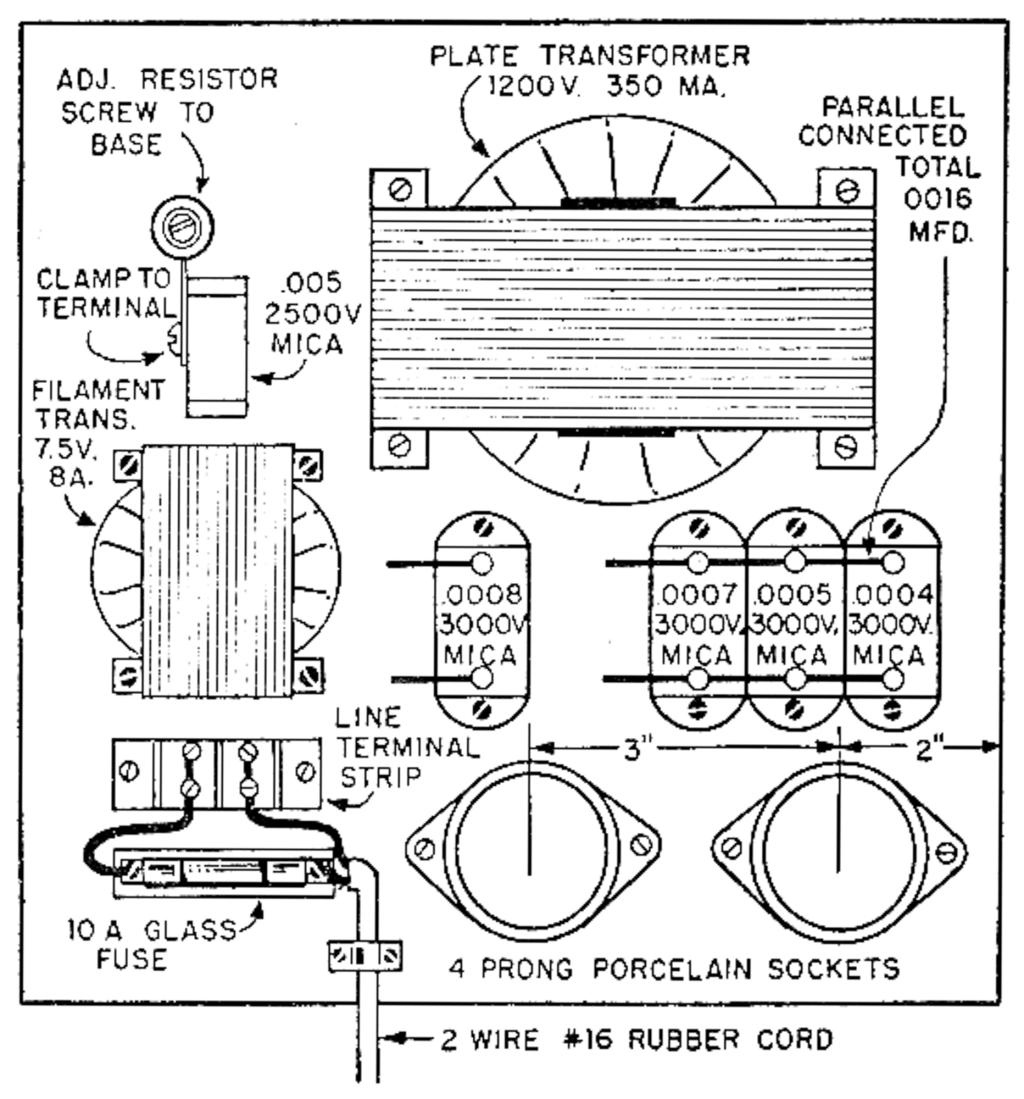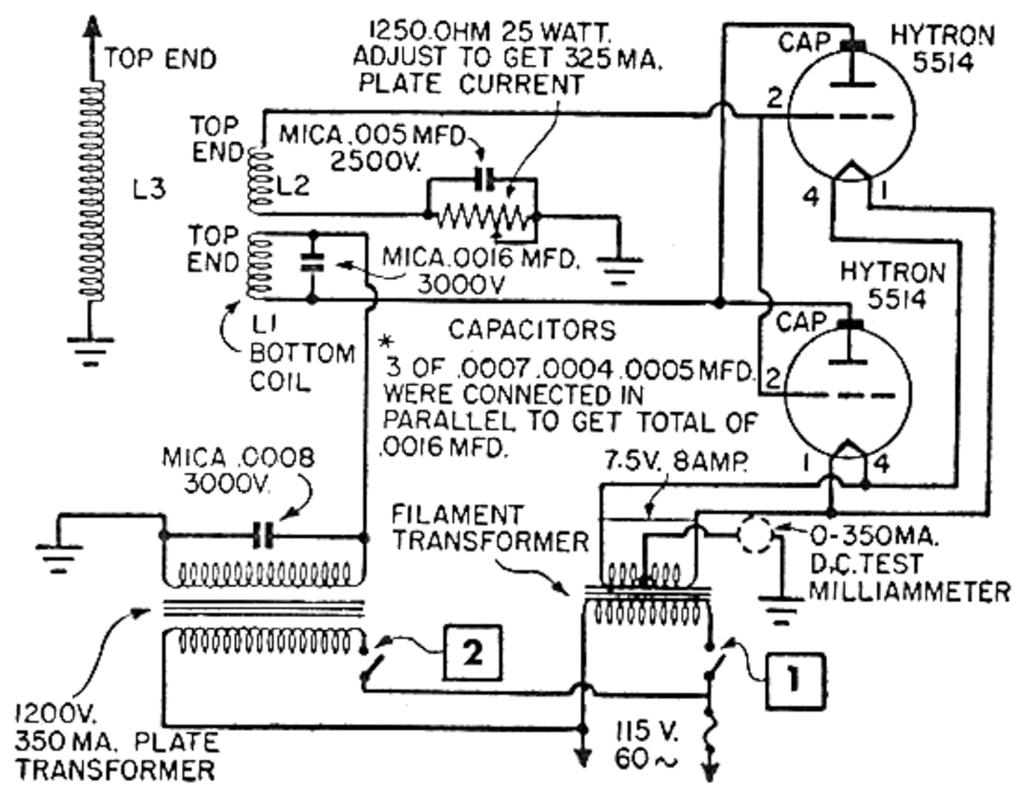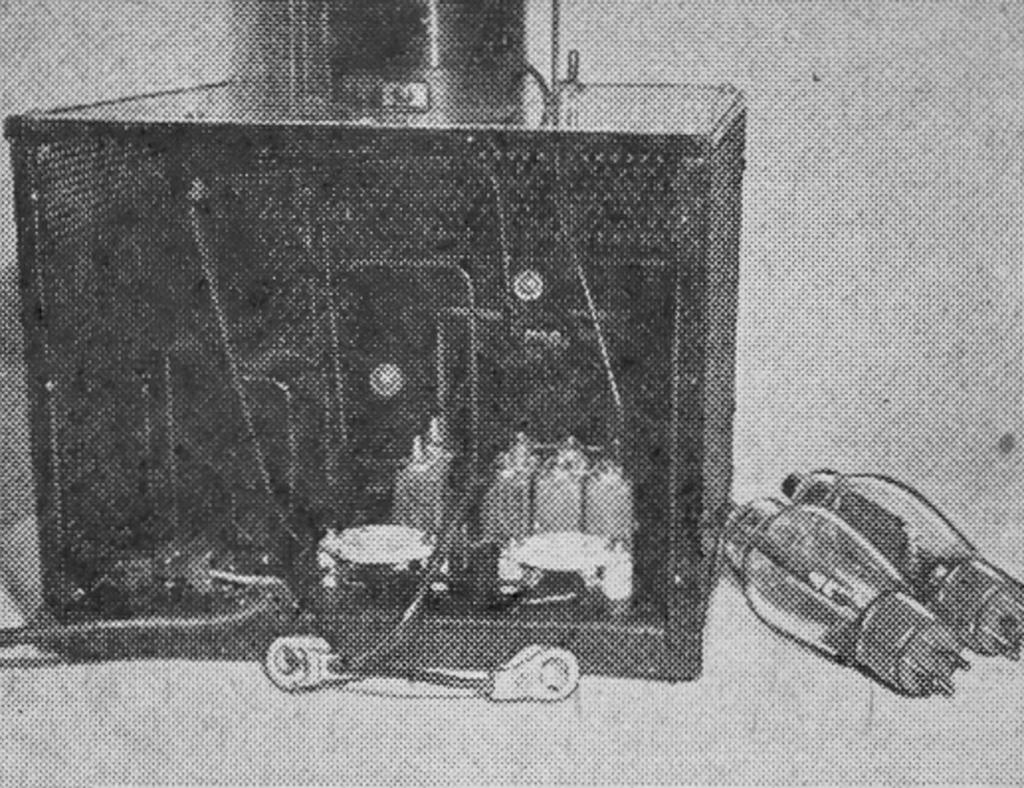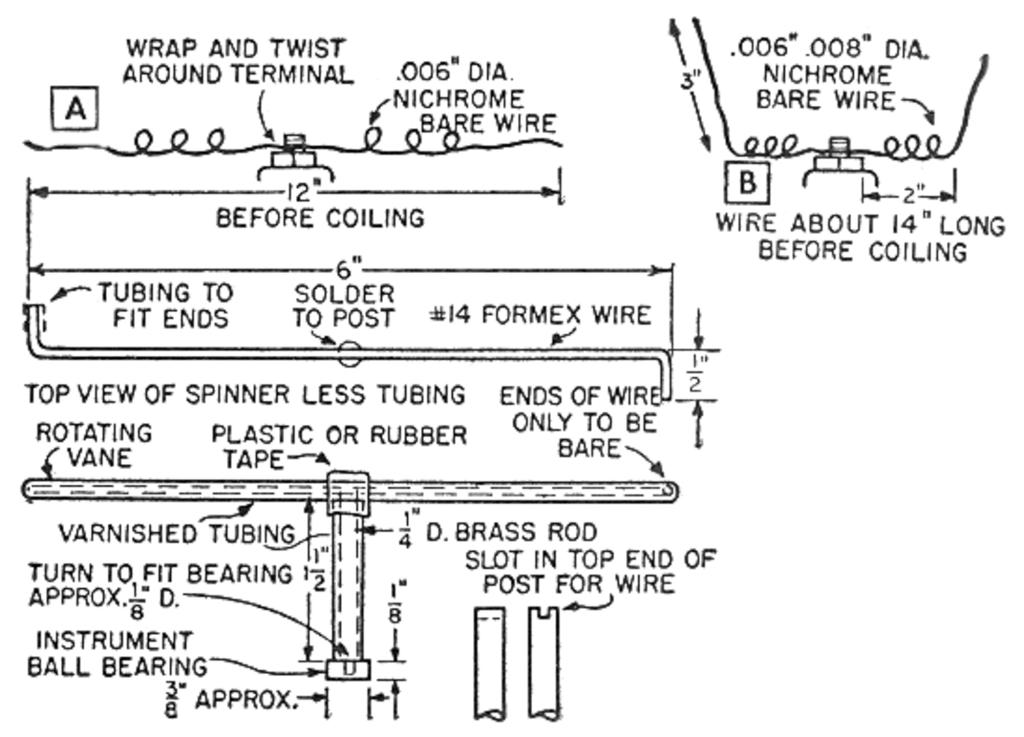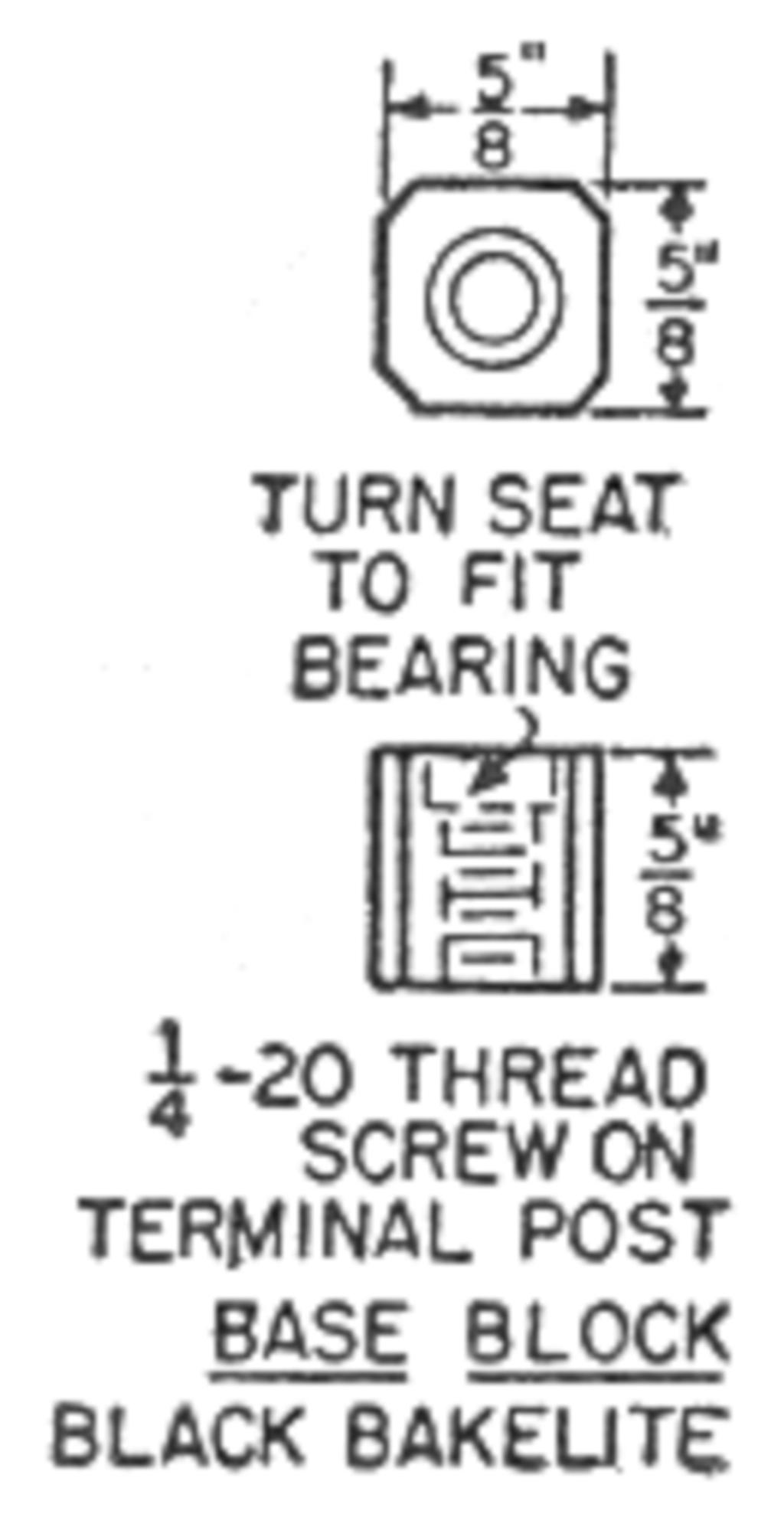TCBA Volume 20 - Issue 1
Page 14 of 18
To prove the high-frequency current actually passes through glass, hold a small screwdriver, with a well-insulated plastic handle and touch the end of the blade to the bulb. The flames inside will reach toward this point of external contact. If the screwdriver is drawn slightly away from the glass, short sparks will jump to the end of the blade. The current actually finds a path to ground through the glass bulb, screwdriver and your body. Fig. 6 shows the flames, but it would take color to do the sight justice.
An experiment that will mystify your friends is the remote lighting of a fluorescent lamp, like the 32-watt Circline type shown in Fig. 1. First, place the Tesla coil on the floor in an adjoining room, but near the wall. Throw the switch for the usual brush discharge and then close the door. In the room away from the coil but near the wall, sit down and prepare to read in a dim light. To get more light, simply pick up the fluorescent lamp in your hand and hold it near the wall and there you have it - electric light without wires! Tesla first dreamed of radiating energy to light entire buildings in this manner, but the scheme would be inefficient, not to mention radio and TV interference.
The high frequency radiating from the Tesla coil lights the lamp several feet from the wall, but with diminished light as it gets farther away. Interference from the coil can be picked up on radios and television sets all over the neighborhood, so be considerate of your neighbors and do your experimenting early in the morning or when they might not be listening or viewing their favorite programs.
Radiating energy through the wall shows how hard it is to confine this high-frequency energy. Therefore, cover all parts of any metal used with enamel, lacquer, shellac or varnish except where actual discharge is wanted. Varnished tubing is another good insulating material. None of these insulators actually confines the energy, but they do help and keep visible discharges to points not covered. Nichrome wire resists the heat generated at the end of the wires, so use it instead of copper, which burns away and often throws hot metal from pinwheels.
• Craft Prints in enlarged size for building Tesla coil projects are available at 50¢ a set (no C.O.D.'s). Order by print number from Craft Print Dept. E-1S4, Science and Mechanics, 450 E. Ohio St., Chicago 11, Illinois.

